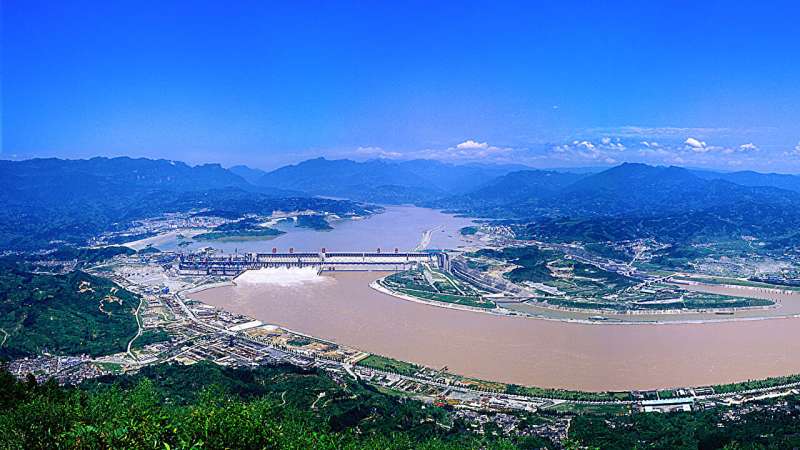Inland waters are a blind spot in greenhouse gas emissions
Inland waters such as rivers, lakes, reservoirs, and ponds may release copious amounts of greenhouse gases, but this possibility is not well understood. In a new review published in theJournal of Geophysical Research: Biogeosciences, Qianqian Yang and colleagues summarize what’s known about carbon dioxide and methane release from China’s inland waterways and suggest that a widespread monitoring network could help researchers understand this important aspect of climate change.
China is a vast country, covering about 9.6 million square kilometers, with waterways woven throughout. Numerous processes, including melting permafrost on the Tibetan Plateau, urbanization, and metabolic activity in aquaculture ponds, influence greenhouse gas emissions from the country’s waters.
Thawing permafrost releases carbon that’s long been trapped in soil, first into water and eventually into the atmosphere. Little is known about how quickly the Tibetan Plateau will warm and what that will mean to the rate at which thawing permafrost introduces greenhouse gases into the atmosphere.
Meanwhile, China is urbanizing rapidly, and with urbanization comes more sewage in lakes and rivers. Nutrients from sewage can fuel the growth of microbes, which release carbon dioxide and methane. China has turned largely to hydropower to meet rising electricity demands. Rampant microbial growth is common in the country’s dam-formed reservoirs, which number about 98,500.
China is also home to about 60% of the world’s aquaculture farms. Like sewage, nutrients meant to feed livestock can encourage microbial growth and lead to carbon dioxide and methane emissions. Aerating the water, on the other hand, can suppress the growth of anaerobic microbes, potentially reducing the amount of methane they release.
Scientists need much more information to fully understand the impacts of China’s inland waterways on climate change. The researchers suggest constructing an extensive monitoring network and taking frequent readings of the water’s biochemical and biological qualities to understand the full impact of China’s freshwater systems on global change.
More information:
Qianqian Yang et al, Carbon Emissions From Chinese Inland Waters: Current Progress and Future Challenges, Journal of Geophysical Research: Biogeosciences (2024). DOI: 10.1029/2023JG007675
This story is republished courtesy of Eos, hosted by the American Geophysical Union. Read the original story here.
Citation:
Inland waters are a blind spot in greenhouse gas emissions (2024, March 8)
retrieved 8 March 2024
from https://phys.org/news/2024-03-inland-greenhouse-gas-emissions.html
This document is subject to copyright. Apart from any fair dealing for the purpose of private study or research, no
part may be reproduced without the written permission. The content is provided for information purposes only.

Inland waters such as rivers, lakes, reservoirs, and ponds may release copious amounts of greenhouse gases, but this possibility is not well understood. In a new review published in theJournal of Geophysical Research: Biogeosciences, Qianqian Yang and colleagues summarize what’s known about carbon dioxide and methane release from China’s inland waterways and suggest that a widespread monitoring network could help researchers understand this important aspect of climate change.
China is a vast country, covering about 9.6 million square kilometers, with waterways woven throughout. Numerous processes, including melting permafrost on the Tibetan Plateau, urbanization, and metabolic activity in aquaculture ponds, influence greenhouse gas emissions from the country’s waters.
Thawing permafrost releases carbon that’s long been trapped in soil, first into water and eventually into the atmosphere. Little is known about how quickly the Tibetan Plateau will warm and what that will mean to the rate at which thawing permafrost introduces greenhouse gases into the atmosphere.
Meanwhile, China is urbanizing rapidly, and with urbanization comes more sewage in lakes and rivers. Nutrients from sewage can fuel the growth of microbes, which release carbon dioxide and methane. China has turned largely to hydropower to meet rising electricity demands. Rampant microbial growth is common in the country’s dam-formed reservoirs, which number about 98,500.
China is also home to about 60% of the world’s aquaculture farms. Like sewage, nutrients meant to feed livestock can encourage microbial growth and lead to carbon dioxide and methane emissions. Aerating the water, on the other hand, can suppress the growth of anaerobic microbes, potentially reducing the amount of methane they release.
Scientists need much more information to fully understand the impacts of China’s inland waterways on climate change. The researchers suggest constructing an extensive monitoring network and taking frequent readings of the water’s biochemical and biological qualities to understand the full impact of China’s freshwater systems on global change.
More information:
Qianqian Yang et al, Carbon Emissions From Chinese Inland Waters: Current Progress and Future Challenges, Journal of Geophysical Research: Biogeosciences (2024). DOI: 10.1029/2023JG007675
This story is republished courtesy of Eos, hosted by the American Geophysical Union. Read the original story here.
Citation:
Inland waters are a blind spot in greenhouse gas emissions (2024, March 8)
retrieved 8 March 2024
from https://phys.org/news/2024-03-inland-greenhouse-gas-emissions.html
This document is subject to copyright. Apart from any fair dealing for the purpose of private study or research, no
part may be reproduced without the written permission. The content is provided for information purposes only.
